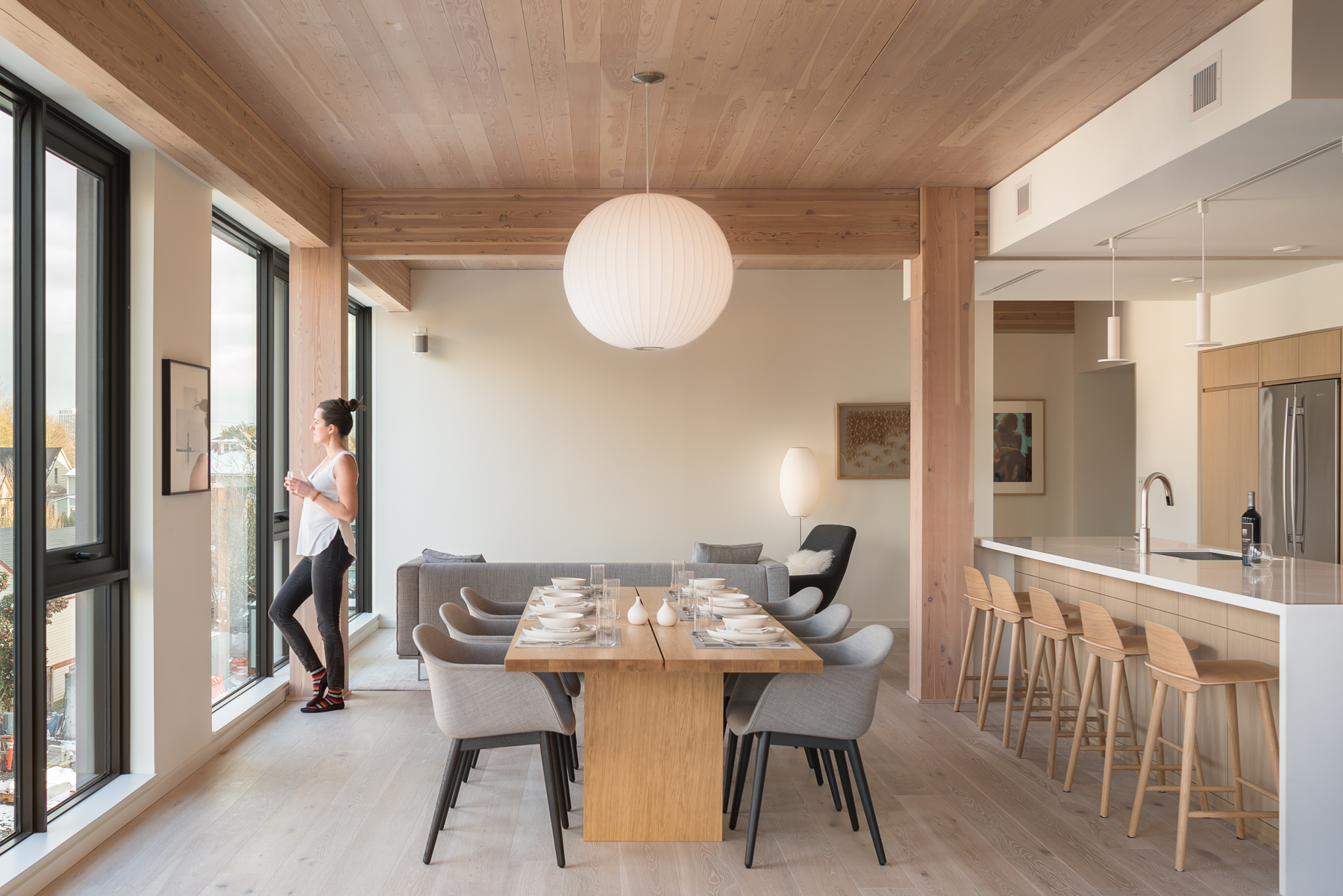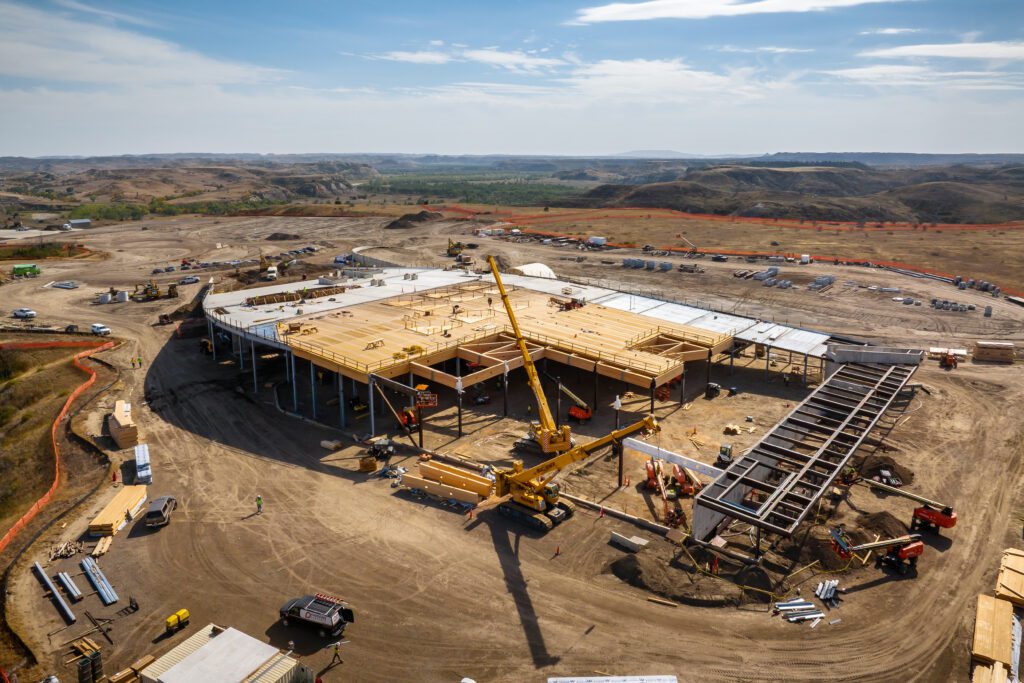Affordable living spaces in the U.S. are rarer than gold dust right now. According to Redfin, only 15.5% of homes for sale in 2023 were considered affordable for a typical U.S. household.
Since the housing market collapse of 2008, there’s been an inadequate supply of new homes constructed to meet demand, resulting in a deficit of millions of units. And local incomes are barely touching the inflation rate that mortgage payments are, making the gap in affordability far worse for low-income households. With monthly payments increasing by roughly $250 compared to a year ago, it’s safe to say the U.S. is struggling to meet the targets required to address this pressing issue.
To confront this national emergency head-on, the U.S. needs a cost-effective, highly efficient, and local solution to emerge and revolutionize how the construction industry approaches urban housing development.
Introducing mass timber.
What does Mass Timber Bring to the Table?
Mass timber, also known as engineered wood, encompasses an array of structural products that are made up of multiple layers of lumber laminated together to form solid panels, beams, and columns.
Renowned as an all-purpose, sturdy, and renewable material, mass timber provides an excellent alternative to traditional building materials like concrete and steel. In recent years, it’s started to receive nationwide recognition, with expanded building codes and government support allowing for greater adoption by owners and developers.
In 2020, only 500 mass timber projects were present in the US, but as of December 2023, over 2,000 mass timber projects have been commenced or completed.
And the movement doesn’t stop there. The Biden Administration recently announced $32 Million to fund wood innovations and community wood grants in an effort to strengthen and expand the emerging mass timber market.
Mass timber has grown to become a trusted foundation for new builds across the states, but what qualities make this material such a great resource for construction?

Check out mass timber projects on the Woodworks Innovation Network (WIN), a Mercer Mass Timber partner.
Getting Limber with Timber
Mass timber opens up a whole new world of opportunities for architects. The versatility and stability of cross-laminated timber (CLT) allows for a diverse range of housing options, whether it’s family-sized units or large-scale apartment complexes. With taller mass timber buildings on the table, there’s even greater potential to establish more affordable living spaces. From a design perspective, mass timber unlocks a new-found level of flexibility.
Mass timber’s lightweight nature coupled with its impressive strength means fewer foundational requirements, enabling architects to build more open and airy living spaces.
Also, since mass timber panels come in prefabricated elements, they can be precisely engineered and connected without hassle. This gives design teams the freedom to create innovative and visually striking structures while leveraging mass timber’s inherent biophilic elements to bring warmth and character into interior spaces.

Axing Carbon Emissions
With the current climate crisis, low-emission housing materials are imperative to ensure that construction projects refrain from inflicting further environmental damage. That’s where mass timber can help.
Not only is mass timber a renewable resource, it also sequesters carbon, contributing to a lower carbon footprint than traditional construction materials. According to the CDC, an 18-story mass timber building’s negative carbon imprint is so powerful that it’s equal to taking 2,350 cars off the road per year.
The use of mass timber in construction has spurred the adoption of modern forestry practices that aim to facilitate a healthy and continuous growth, harvest, and replant cycle. These sustainable operations play a vital role in guaranteeing responsible forest farm management, which will benefit the future generations to come.

The Affordability Factor
Whether we like it or not, price is a driving factor in key decision-making. Fortunately, a notable advantage of mass timber construction is its cost-effectiveness, especially compared to its traditional counterparts.
As a locally sourced solution, mass timber doesn’t require the shipping that steel does, but the cost savings go much further than the price of the material itself. They also encompass the savings accrued through faster construction times, reducing labor costs by up to 20% compared to concrete-focused projects.
So, how does this support affordable housing? With CLT, developers can streamline building processes, significantly cutting down on construction costs, which can then go to tenants in the form of lower rents. Also, developers can gain additional ROI advantages from faster speed-to-occupancy, allowing them to quickly recoup on their investments.



Revitalizing Spaces: Transforming Offices into Affordable Living Spaces
There’s a severe empty office epidemic spanning across the United States. At the end of last year, a fifth of U.S. office space was vacant, with rates varying from 25% (Los Angeles, Houston, and Cincinnati) to 5% (Savannah, Ga. and Naples, Fla.) South Carolina alone had enough empty office space to fill a landmark Los Angeles office tower 58 times.
Building conversions remain a largely untapped source of potential to establish more affordable housing options. This simple yet effective solution holds the power to restore tired downtowns, address a national housing shortage and reduce greenhouse gas emissions by working with existing structures.
Mass timber stands out as a pivotal resource for office-to-residential conversions in cities. In tight urban environments, mass timber’s lightweight nature and prefab capabilities allow developers to cut down on heavy equipment and navigate the constraints of limited space more effectively, streamlining the overall construction process.
“The idea that a building doesn’t have to serve one purpose for its entire lifecycle is beginning to catch on,” says Ricardo Brites, Director of Engineering and VDC at MMT. “We can have housing and office spaces in the same building, structurally adaptable by design so that it can be a visually appealing environment to encourage active use by the community.” What do we need to achieve this? Brites believes building codes and zoning laws need to continue adapting as well.
Numerous state and local governments throughout the U.S. are offering incentive programs for office conversion projects, aiming to encourage local jurisdictions to loosen restrictions for office-to-residential conversions. This governmental assistance intends to enhance the accessibility of conversion projects for private developers to support wider efforts to address the affordable housing crisis.
Branching Out: The Alternative Building Material for Affordable Homes
Several forward-thinking cities have already migrated from the status quo, adopting mass timber to build mid-rise and high-rise residential buildings on underutilized land parcels.
Mass timber enters construction sites as an accessible, renewable, and productive resource, poised to combat the affordable living crisis, harmonize economic growth, and support environmental stewardship.
From Vancouver’s Brock Commons Tallwood House to London’s timber skyscraper proposals, these cities serve as beacons of innovation for the U.S. to follow suit.


